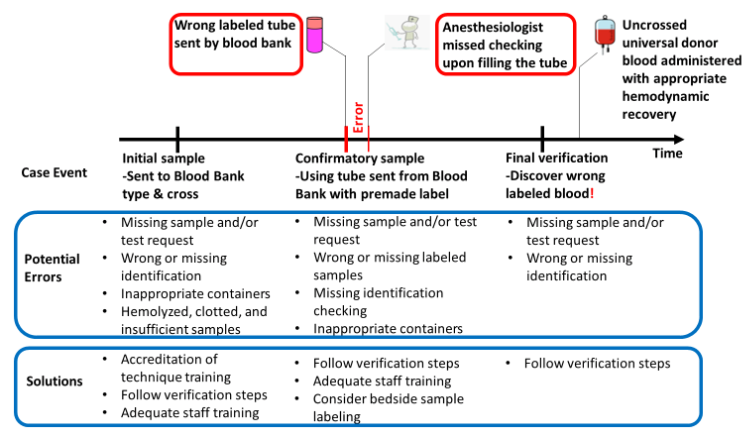
Possible blood transfusion. Learn vocabulary, terms, and more with flashcards, games, and other study tools. The very best practices for blood transfusion must be employed, since the need for lifelong transfusions leads to a cumulative increase in the risk of adverse reactions.Even when a person receives the correct blood type, allergic reactions can occur.Start studying Shock and Transfusions PPT2. 4.4 Adverse reactions to transfusions. Blood donorscollection and storage part2 BLOOD TRANSFUSION REACTION Bone marrow.Annual blood transfusion requirement in patients without hypersplenism is usually below 200 mL packed red blood cells/kg per year. Opinion 2: Anyone involved in a transfusion should be allowed to initiate a transfusion reaction workup 1) Nurses, perfusionists, and other transfusing staff should be empowered to contact the blood bank directly if suspicious findings occur during transfusion 2) This is from hard experience, with suspected reactions being under-reportedExamples of acute transfusion reactions include the following: Simple allergic reactionHEMATOLOGY PPT LECTURE NOTES Acute Leukaemia (1) Acute Leukaemia An.
antibodies in donor blood react with antibodies in the recipient’s bloodTreatments for a mild allergic reaction include: the donor blood containing food allergens, such as peanut or gluten the donor blood containing specific plasma proteins that the recipient’s blood sees as allergens According to a 2013 article in the British Journal of Haematology, reactions occur due to: Symptoms- vomiting, urticaria, angiodema.
Blood Transfusion Reaction Ppt Professional Will Stop
TreatmentIf FNHTR occurs during the transfusion, the healthcare professional will stop the procedure.Treatment depends on the symptoms. body temperature higher than 38✬ (100.4✯)If other symptoms are present, the person should contact their doctor. SymptomsSymptoms will depend on the severity and may include: It involves an unexplained rise in temperature during or 4 hours after the transfusion.The fever is part of the person’s white blood cells response to the new blood. After this, they will address the specific symptoms, which can include:Febrile non-hemolytic transfusion reactionAccording to the CDC, a febrile non-hemolytic transfusion reaction (FNHTR) is the most common reaction. SymptomsIf a person is experiencing any of the above symptoms, a nurse or doctor will stop the transfusion.
SymptomsSeptic transfer reactions require immediate attention. SymptomsIf a person develops an acute hemolytic transfusion reaction, the doctor or nurse will stop the transfusion.Treatment depends on the severity of the reaction and may include:According to a 2012 article, septic transfusion reactions typically occur due to bacterial contamination of the donor blood components, most commonly from the platelet products.The bacteria in platelets that can cause a septic transfusion reaction include Staphylococcus aureus and Staphylococcus epidermidis. This type of reaction occurs if a person has received the wrong blood type.A 2019 article states that an acute hemolytic transfusion reaction causes the body to start destroying the donated red blood cells. taking the recommended dose of aspirin or acetaminophenAccording to the CDC, this type of reaction occurs during, immediately afterward, or within 24 hours of the transfusion. investigating all cases of fever as it may indicate a more severe cause
For mild cases, a person will need oxygen therapy. SymptomsTreatment depends on the severity of the symptoms: This results in pulmonary edema, or excess fluid in the lungs.According to the American Red Cross, no specific test exists to identify which blood products will cause TRALI. It happens when antibodies in the donor blood, such as human leukocyte antibodies, react with the recipient’s leukocytes, or white blood cells.
treating a person with diuretics to remove excess fluid may help resolve more advanced TACO placing the person in an upright position is often sufficient to treat mild TACO SymptomsSymptoms of TACO usually occur within a few hours of or during the transfusion and include:If symptoms occur during the transfusion, the doctor or healthcare professional will stop the procedure immediately.According to LabMedicine, treatment for TACO depends on the severity. Doctors call this volume overload, and people who have heart or kidney conditions may develop it.In TACO, the circulatory system becomes overwhelmed, resulting in pulmonary edema where the lungs fill up with excess fluid. Transfusion-associate circulatory overload (TACO)TACO occurs if a person’s circulatory system is unable to process the amount of blood or the speed at which they are receiving it. However, TRALI can be fatal and has a mortality rate of between 5–25%.
Transfusion-associated graft versus host disease (TAGVHD)According to the CDC, TAGVHD occurs when T-lymphocytes, a type of white blood cell, from the donor blood rapidly increase in number in the recipient. If the reaction is significant, hydration is important. SymptomsAccording to LabMedicine, these transfusion reactions tend to be mild and do not require treatment. Those with the antibodies have a higher chance of developing these transfusion reactions. These particular antibodies decrease over time to undetectable levels. Reactions can occur between 1 day and 4 weeks after the transfusion.A person can acquire these antibodies through previous pregnancies or transfusions.

This results in the destruction of platelets and a decline in platelet numbers. It occurs when the recipient develops antibodies against the platelets.


 0 kommentar(er)
0 kommentar(er)
